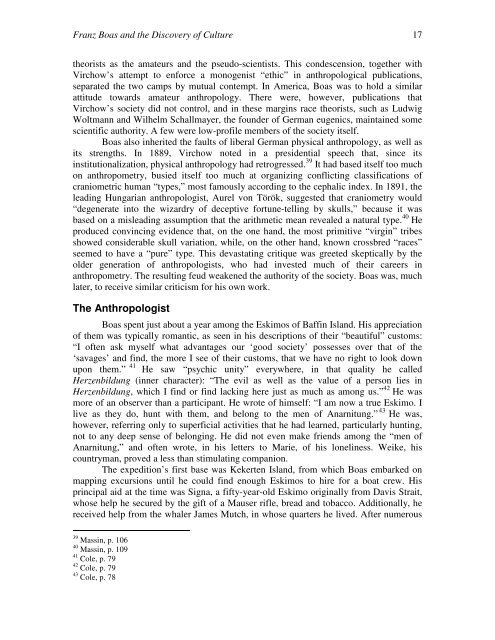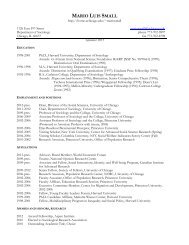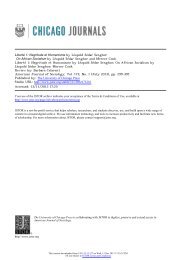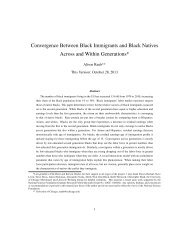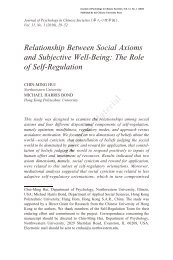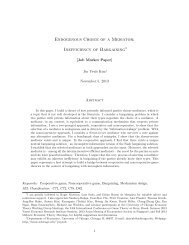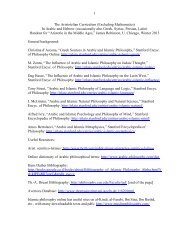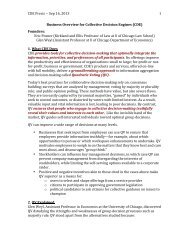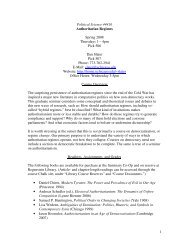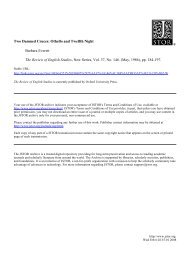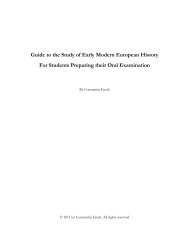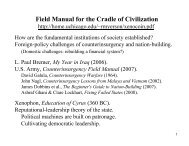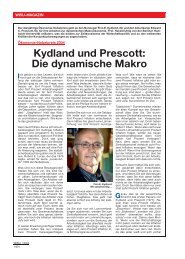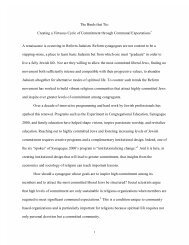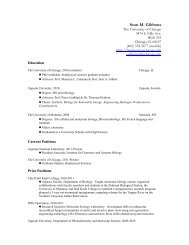Franz Boas and the Discovery of Culture - Personal Web Pages ...
Franz Boas and the Discovery of Culture - Personal Web Pages ...
Franz Boas and the Discovery of Culture - Personal Web Pages ...
You also want an ePaper? Increase the reach of your titles
YUMPU automatically turns print PDFs into web optimized ePapers that Google loves.
<strong>Franz</strong> <strong>Boas</strong> <strong>and</strong> <strong>the</strong> <strong>Discovery</strong> <strong>of</strong> <strong>Culture</strong> 17<br />
<strong>the</strong>orists as <strong>the</strong> amateurs <strong>and</strong> <strong>the</strong> pseudo-scientists. This condescension, toge<strong>the</strong>r with<br />
Virchow’s attempt to enforce a monogenist “ethic” in anthropological publications,<br />
separated <strong>the</strong> two camps by mutual contempt. In America, <strong>Boas</strong> was to hold a similar<br />
attitude towards amateur anthropology. There were, however, publications that<br />
Virchow’s society did not control, <strong>and</strong> in <strong>the</strong>se margins race <strong>the</strong>orists, such as Ludwig<br />
Woltmann <strong>and</strong> Wilhelm Schallmayer, <strong>the</strong> founder <strong>of</strong> German eugenics, maintained some<br />
scientific authority. A few were low-pr<strong>of</strong>ile members <strong>of</strong> <strong>the</strong> society itself.<br />
<strong>Boas</strong> also inherited <strong>the</strong> faults <strong>of</strong> liberal German physical anthropology, as well as<br />
its strengths. In 1889, Virchow noted in a presidential speech that, since its<br />
institutionalization, physical anthropology had retrogressed. 39 It had based itself too much<br />
on anthropometry, busied itself too much at organizing conflicting classifications <strong>of</strong><br />
craniometric human “types,” most famously according to <strong>the</strong> cephalic index. In 1891, <strong>the</strong><br />
leading Hungarian anthropologist, Aurel von Török, suggested that craniometry would<br />
“degenerate into <strong>the</strong> wizardry <strong>of</strong> deceptive fortune-telling by skulls,” because it was<br />
based on a misleading assumption that <strong>the</strong> arithmetic mean revealed a natural type. 40 He<br />
produced convincing evidence that, on <strong>the</strong> one h<strong>and</strong>, <strong>the</strong> most primitive “virgin” tribes<br />
showed considerable skull variation, while, on <strong>the</strong> o<strong>the</strong>r h<strong>and</strong>, known crossbred “races”<br />
seemed to have a “pure” type. This devastating critique was greeted skeptically by <strong>the</strong><br />
older generation <strong>of</strong> anthropologists, who had invested much <strong>of</strong> <strong>the</strong>ir careers in<br />
anthropometry. The resulting feud weakened <strong>the</strong> authority <strong>of</strong> <strong>the</strong> society. <strong>Boas</strong> was, much<br />
later, to receive similar criticism for his own work.<br />
The Anthropologist<br />
<strong>Boas</strong> spent just about a year among <strong>the</strong> Eskimos <strong>of</strong> Baffin Isl<strong>and</strong>. His appreciation<br />
<strong>of</strong> <strong>the</strong>m was typically romantic, as seen in his descriptions <strong>of</strong> <strong>the</strong>ir “beautiful” customs:<br />
“I <strong>of</strong>ten ask myself what advantages our ‘good society’ possesses over that <strong>of</strong> <strong>the</strong><br />
‘savages’ <strong>and</strong> find, <strong>the</strong> more I see <strong>of</strong> <strong>the</strong>ir customs, that we have no right to look down<br />
upon <strong>the</strong>m.” 41 He saw “psychic unity” everywhere, in that quality he called<br />
Herzenbildung (inner character): “The evil as well as <strong>the</strong> value <strong>of</strong> a person lies in<br />
Herzenbildung, which I find or find lacking here just as much as among us.” 42 He was<br />
more <strong>of</strong> an observer than a participant. He wrote <strong>of</strong> himself: “I am now a true Eskimo. I<br />
live as <strong>the</strong>y do, hunt with <strong>the</strong>m, <strong>and</strong> belong to <strong>the</strong> men <strong>of</strong> Anarnitung.” 43 He was,<br />
however, referring only to superficial activities that he had learned, particularly hunting,<br />
not to any deep sense <strong>of</strong> belonging. He did not even make friends among <strong>the</strong> “men <strong>of</strong><br />
Anarnitung,” <strong>and</strong> <strong>of</strong>ten wrote, in his letters to Marie, <strong>of</strong> his loneliness. Weike, his<br />
countryman, proved a less than stimulating companion.<br />
The expedition’s first base was Kekerten Isl<strong>and</strong>, from which <strong>Boas</strong> embarked on<br />
mapping excursions until he could find enough Eskimos to hire for a boat crew. His<br />
principal aid at <strong>the</strong> time was Signa, a fifty-year-old Eskimo originally from Davis Strait,<br />
whose help he secured by <strong>the</strong> gift <strong>of</strong> a Mauser rifle, bread <strong>and</strong> tobacco. Additionally, he<br />
received help from <strong>the</strong> whaler James Mutch, in whose quarters he lived. After numerous<br />
39 Massin, p. 106<br />
40 Massin, p. 109<br />
41 Cole, p. 79<br />
42 Cole, p. 79<br />
43 Cole, p. 78


